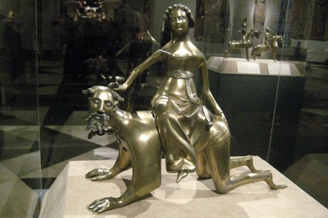History
The almond has an interesting tie to
biblical times. Reference is made to the almond, numerous
times, throughout the pages of The Bible. Almond branches
bloom prematurely, when placed in water, therefore Hebrews
looked at the almond tree as a sign of haste, due to its sudden blooming. The book of Numbers 17:8
references where the Hebrews came to this belief and supports
the reference to the speed to which the plant sprouts.
Greek mythology also references the almond. Queen Phyllis,
who died of grief, was transformed into an almond tree.
The almond is substantially documented in history, but the
question remains - in actuality, where did the almond tree
originate and how did it come about.
haste, due to its sudden blooming. The book of Numbers 17:8
references where the Hebrews came to this belief and supports
the reference to the speed to which the plant sprouts.
Greek mythology also references the almond. Queen Phyllis,
who died of grief, was transformed into an almond tree.
The almond is substantially documented in history, but the
question remains - in actuality, where did the almond tree
originate and how did it come about.
As previously learned on the habitat page,
almond trees can be found in temperate, desert
climates. Around 716 A.D. almonds were introduced to
Europe . They were very popular there and were commonly
used for cooking
 due
to the inexpensiveness of them. In Southern Europe almonds
came to symbolize good luck and were commonly given and used at
weddings.
due
to the inexpensiveness of them. In Southern Europe almonds
came to symbolize good luck and were commonly given and used at
weddings.
Almonds originated in Western Asia and eventually spread to the Mediterranean, North Africa, Spain, Portugal, and France by crusaders and through conquests. The first tracing of almonds were brought to North America from the Spanish missionaries in California. Today in California the almond is now one of the most important crops in terms of acreage, money value, and world distribution.
Key aspect to almonds living long enough to make history, nutrition!
